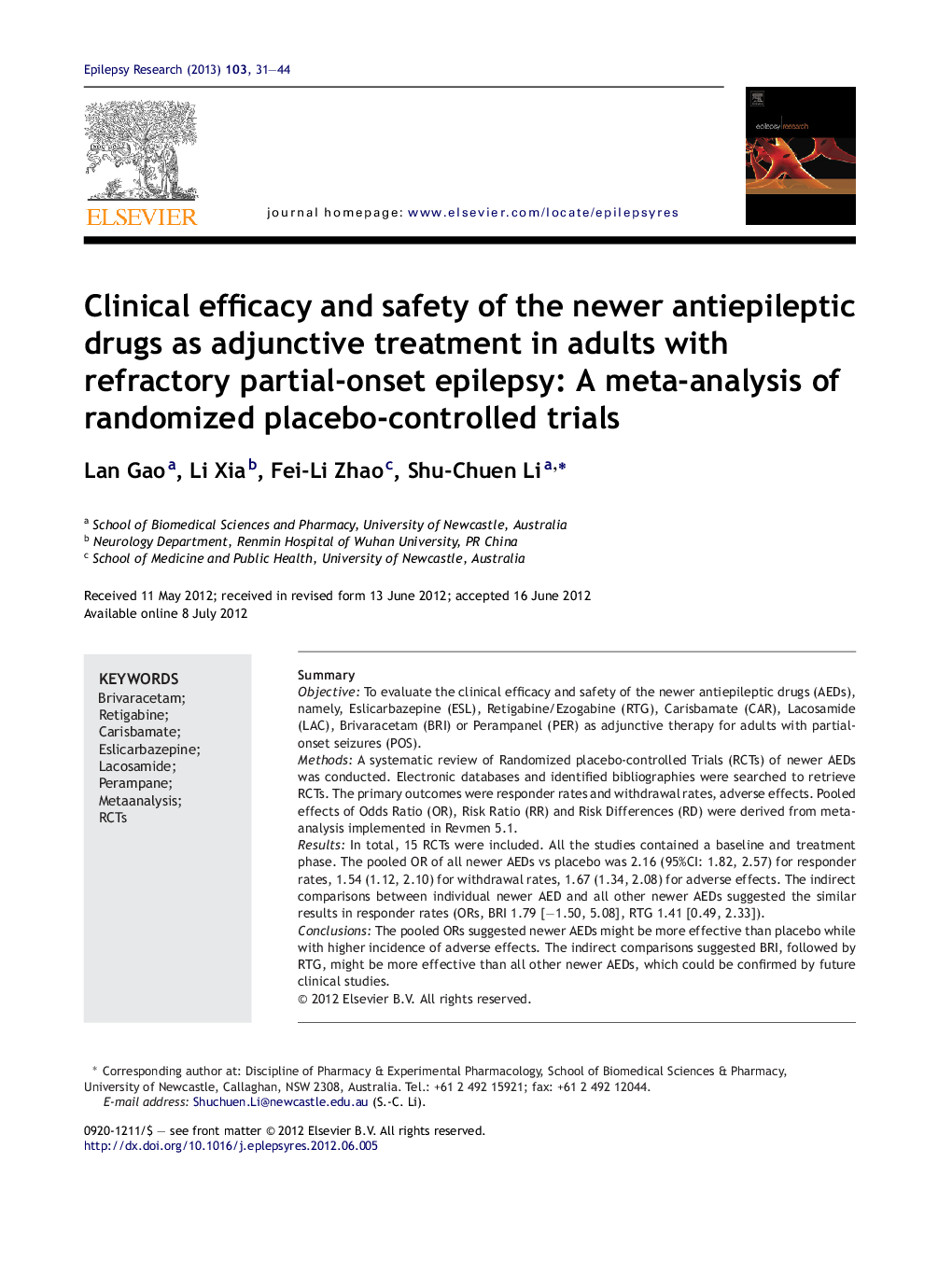| Article ID | Journal | Published Year | Pages | File Type |
|---|---|---|---|---|
| 6015820 | Epilepsy Research | 2013 | 14 Pages |
SummaryObjectiveTo evaluate the clinical efficacy and safety of the newer antiepileptic drugs (AEDs), namely, Eslicarbazepine (ESL), Retigabine/Ezogabine (RTG), Carisbamate (CAR), Lacosamide (LAC), Brivaracetam (BRI) or Perampanel (PER) as adjunctive therapy for adults with partial-onset seizures (POS).MethodsA systematic review of Randomized placebo-controlled Trials (RCTs) of newer AEDs was conducted. Electronic databases and identified bibliographies were searched to retrieve RCTs. The primary outcomes were responder rates and withdrawal rates, adverse effects. Pooled effects of Odds Ratio (OR), Risk Ratio (RR) and Risk Differences (RD) were derived from meta-analysis implemented in Revmen 5.1.ResultsIn total, 15 RCTs were included. All the studies contained a baseline and treatment phase. The pooled OR of all newer AEDs vs placebo was 2.16 (95%CI: 1.82, 2.57) for responder rates, 1.54 (1.12, 2.10) for withdrawal rates, 1.67 (1.34, 2.08) for adverse effects. The indirect comparisons between individual newer AED and all other newer AEDs suggested the similar results in responder rates (ORs, BRI 1.79 [â1.50, 5.08], RTG 1.41 [0.49, 2.33]).ConclusionsThe pooled ORs suggested newer AEDs might be more effective than placebo while with higher incidence of adverse effects. The indirect comparisons suggested BRI, followed by RTG, might be more effective than all other newer AEDs, which could be confirmed by future clinical studies.
